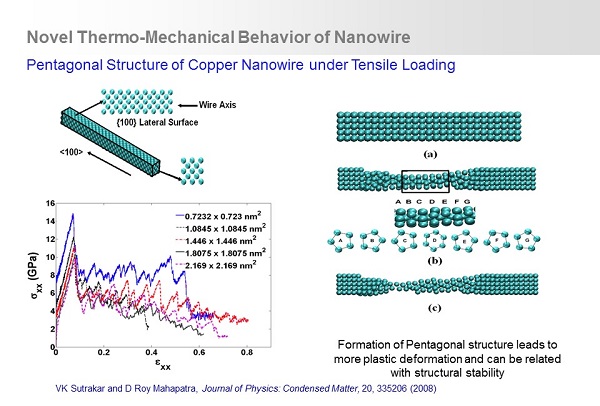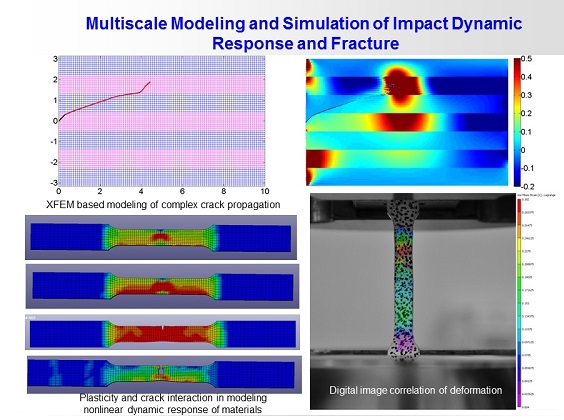Nanostructures and nanostructured composite form of materials have physical properties, which are most often very different from their bulk form. Often in Nature, this type of nanostructured materials gives rise to important properties in earth and planetary structural consolidation and natural living species. Understanding these processes and ways to make new nanostructures and its combined forms have important applications in designing better structures that involve not only macro-scale geometry but also micro and nano-scale geometries besides physical property based material design. Thermo-mechanical processes and the underlying stability, stiffness, strength, and scheme of micro-scale assembly of nanostructures for better designs are of interests. Analytical mechanics, first-principle calculation, molecular dynamic simulation, finite element based continuum level modelling and simulation of the thermo-mechanical and electromagnetic phenomena are studied. Mechanistic hypothesis and design concepts are validated by experiments in those problems where engineering applications are considered useful.

Defect nucleation mechanisms leading to fracture initiation in several important engineering materials (single crystals and alloys) remain open problems. In our current research, these mechanisms are considered as important design driver. Various nano- and micro-structured composite (metallic alloys with dissimilar metallic nanostructure reinforcements, metallic glass, eutectic etc.) are of interest

In other areas of lighter and stronger composite materials, carbon nanotube, graphene and its decorated nano-scale architecture involving oxides, nitrides and carbides have shown promising properties when dispersed in polymer matrix. Aerospace structural composites, which employ organic or ceramic fiber reinforcements and polymer matrix, have potential scope for its modification based on the nano-material dispersion. Fundamental mechanisms toward enhancement of thermo-mechanical and electromagnetic properties are studied in the current research effort.

Continuum level modeling of fracture in materials and structures requires accurate representation of material properties in the fracture process zone, fracture initiation and growth. Computational problems arising in finite element based simulation become complicated when material nonlinearity is coupled to geometric nonlinearity or crack growth. Constitutive modeling involving finite deformation plasticity, strain rate effect and crack tip cohesive zone effect are considered in the present research effort to simulate impact dynamics and dynamic fracture within the framework of extended finite element.
